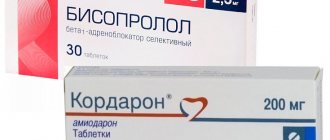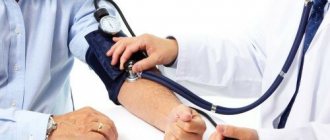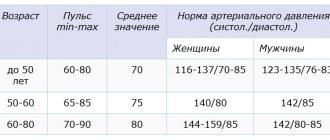When the heart rate is generally elevated
It is worth remembering that there are categories of people whose heart rate is elevated, regardless of physical activity. “Most often, an increased heart rate occurs in obese people, as well as in people with little exercise who lead a sedentary lifestyle. Also, in young women we observe a slightly higher pulse than in men,” says Tatyana Shalygina.
The cardiologist notes that a heart rate from 60 to 90 is considered normal (previously this parameter was lower, a pulse of 60-80 was considered normal). This is provided that the person does not have any reliably confirmed cardiovascular diseases.
“With age, the requirements for pulse increase, especially if there are diseases of the heart and blood vessels, here we already achieve lower pulse values, including due to medications. But this is mainly in older patients with chronic cardiovascular diseases,” says Tatyana Shalygina.
Heart rate often depends on the autonomic nervous system, notes the cardiologist. First of all, the sympathetic nervous system is responsible for it. “In stressful situations and fatigue, there is an increase in heart rate precisely due to the sympathetic nervous system,” says Tatyana Shalygina.
The pulse can also increase against the background of ARVI as a reaction of intoxication, says the cardiologist. Moreover, this is possible for any virus. “The pulse can increase significantly, sometimes even up to 100-105 beats per minute,” says Tatyana Shalygina.
Those who, during exercise, feel not only palpitations, but also “fluttering” of the chest, should be especially careful. If they occur during physical activity, you should consult a doctor, warns the cardiologist.
A quieter pulse means you live longer. What should it be like normally? More details
Heartbeat in sports
An increase in heart rate during physical activity is generally considered normal, says the cardiologist. “The heart rate reasonably increases when we move and especially when there is active physical activity,” says Tatyana Shalygina.
To prevent problems, you should calculate in advance the optimal values for increased heart rate for physical training and carefully monitor it. “There are certain formulas by which the maximum and submaximal values of heart rate are calculated for a particular patient in accordance with age or gender, as well as weight. These are the parameters that are recommended to be achieved during training,” says Tatyana Shalygina.
There are many such formulas, the cardiologist emphasizes. You can calculate the optimal heart rate for exercise yourself. So, the simplest formula for submaximal values is 200 minus age, for maximum values - 220 minus age. “The only thing is that during exercise we do not recommend reaching the maximum; it is worth working up to 75% of the maximum heart rate,” says the cardiologist.
Therefore, during training, you should constantly monitor your heart rate values and react in time if something goes wrong.
What should a child's normal heart rate be during sleep? More details
Pulse zones
There are 5 pulse zones, and each subsequent one will differ in that the pulse in it is higher, respectively, in the first pulse zone the load will be minimal, and in the fifth – maximum.
Zone 1. Recovery or “therapeutic” zone.
The pulse value in this zone is 50-60% of the maximum heart rate (HR), which you can calculate using the formulas given above . The pulse value in the first zone will be approximately half of the resulting number.
Training in this range will be useful for those who have just embarked on the path to healing the body and have poor physical fitness. Loads of this intensity train the heart without unnecessary risk. Any person can carry out loads in this zone without fear for their health. It is recommended to warm up and cool down in this heart rate zone.
Zone 2. Fat burning zone.
The heart rate in this zone is 60-70% of the maximum heart rate . Suitable for anyone with frequent, low-intensity workouts. When training in this range, the fat burning mechanism is activated, and body weight loss occurs due to subcutaneous fat tissue.
In this pulse zone, overall endurance is strengthened and fat burning processes are stimulated.
There is one BUT: we remember that fat burning begins 30-40 minutes after the start of the load, so working at such a pulse should be at least 30-40 minutes. Target sensations: easy breathing, low muscle load, light sweating.
Zone 3. Strength endurance zone.
The heart rate is 70-80% of the maximum heart rate. If you fall into this zone, then the training is effective and you are improving your performance. However, staying in this zone should be short-term, because only trained people, athletes, can work for a long time at such a pulse.
This zone is best suited for increasing the body's endurance. Load duration: 10 minutes or more (depending on fitness; the more trained the body, the longer the interval of stay in this zone). It is this zone that we try to catch during maximum load in the middle of a workout, when we count the pulse.
Zone 4. Improvement zone.
The heart rate is 80-90% of the maximum heart rate. When training at this pulse, anaerobic endurance increases and the ability to achieve maximum results increases.
Load duration: 2-10 minutes. Most often, this zone is used during training by athletes or people who train for a long time.
Zone 5. Maximum heart rate zone.
Heart rate: 90-100% of maximum. This zone is rarely used, in preparation for competitions exclusively by professional athletes.
We have created a convenient tool for you to calculate your individual heart rate zones. You can print it out, enter your calculated values and use this data when planning your training process.
Optimal heart rate indicators:
- During warm-up, the heart rate should not exceed 20 beats. in 10 sec. (120 beats/min). The measurement should be taken immediately after completing a dynamic warm-up (before the inhalation-exhalation cycles). If after the warm-up your heart rate is more than 15 beats per 10 seconds (90 beats/min), then most likely the warm-up was too intense for you.
- During the main part of the workout, the heart rate should be within 27-30 beats per 10 seconds (162-180 beats/min) and not exceed this value (take measurements at the peak of the load in order to be able to adjust the load level). If you find a lower heart rate, try doing the exercise at a faster speed. If, when monitoring your heart rate during the main part of the workout, you received a value exceeding 27-30 beats per 10 seconds (170-180 beats/min), we recommend reducing the load by switching to a lighter option (if you initially performed it, reduce the pace of the exercises or increase rest intervals).
- For people who have not previously exercised, we recommend that the first 2 weeks exercise less intensely, so that the heart rate at the peak of the load does not exceed 25 beats in 10 seconds (150 beats/min). In subsequent weeks, with good load tolerance, it is possible to increase the intensity to a heart rate of 27-30 beats. in 10 sec.
- Upon completion of the cool-down and stretching (15 minutes after training), the heart rate should return to its original value - the one you measured before training. This indicates good recovery of the body and indicates a correctly selected load. At first, a rapid pulse may persist after training, which indicates that the body is poorly trained, or that the load is too high. If you train for a long time, such repeated incomplete recovery may indicate overwork. Then analyze your regime, diet, training cycle and make adjustments so that the exercises are beneficial.
In order not to harm yourself and to properly train your cardio-respiratory system, it is important to train according to pulse zones.
| Start and end the workout in the first heart rate zone (50-60% of the maximum), gradually move through the second zone to the third, bringing the heart rate to 80% of the maximum, and end the workout with a decrease in heart rate. |
Thus, the body will receive a harmonious load, and fitness will increase.
Author: Irina Yakimova, sports doctor #SEKTA, candidate of medical sciences, general practitioner
How to correct the situation?
“If, against the background of physical activity, you feel unwell or have a rapid heartbeat, you should stop exercising. But not sharply, but slowly. Be sure to endure a recovery period when the pulse returns to normal. For example, reduce the load a little if this happened on the treadmill, reduce the speed if you can’t tolerate it well and your heart rate has increased significantly,” says Tatyana Shalygina. Yes, the pulse has the right to rise against the background of the load, it will be scary if it does not react to the load and does not increase. But an overly active heartbeat should also be a signal that something is wrong.
From the point of view of an increase in heart rate and assessing whether this is normal, a person’s fitness also matters. If a person is an athlete, his heart rate will initially be lower, and his pulse will rise more slowly during exercise.
Today, fitness clubs ask for a cardiologist's opinion or a certificate of admission to physical education and sports. You can also get tested at a specialized sports dispensary. This will eliminate contraindications to exercise, the cardiologist notes. “We sometimes ask to undergo a stress test in order to record a cardiogram during exercise and make sure that the person tolerates physical activity well,” says Tatyana Shalygina.
This will allow you to structure your workouts more competently, to know exactly the heart rate values, so that you can correctly monitor it and reduce it in time during the training process.
My heart trembled. When arrhythmia becomes deadly Read more
Pathological athlete's heart
In the United States, they keep a special register where the death of an athlete is celebrated every third day, and mostly football players die - a kind of American football is “densely implicated” in rugby. We do not have such records, but all death cases are widely covered by the press; Russian athletes clearly die much less often. The cause of their death is, as a rule, a pathological sports heart, which is formed by unsystematic extreme loads, doping, training against the background of banal infections and, of course, genetic characteristics.
The mass and thickness of the walls of the heart in this situation are also greater than normal, but due to the lag in the growth of coronary capillaries from the increase in the myocardium itself, its nutrition is disrupted. The muscle is less elastic, so contractility suffers and, therefore, maximum relaxation at rest is impossible. The volume of not only the ventricles that eject blood increases, but also the volume of the atria that receive blood. The volume of the heart is increased, but much more than it should be - more than 1200 cubic centimeters.
Also, the heart rarely contracts, bradycardia occurs. It can be more pronounced, that is, less than 40 contractions per minute, especially at night, which leads to severe oxygen starvation of the brain. With a normal athletic heart, the athlete does not feel a slow heartbeat in any way; when bradycardia is accompanied by clinical symptoms, then this is no longer a normal adaptation of the heart to high loads, but a pathological condition. Decrease in blood pressure below 100/60 mmHg. in such a situation, it is also not an adaptation of the body, but a reaction to painful changes.
Training rules
To prevent training from negatively affecting your heart condition, you should follow simple rules. “If you come to a fitness club for the first time, it is reasonable to contact a trainer to choose an adequate physical activity for yourself, taking into account your weight, age, and the presence of chronic diseases. You should also not overdo it in the club, especially during the first lesson. After all, you should understand that this is already stressful for you, and before there was no proper physical activity,” says Tatyana Shalygina.
It is worth strictly remembering the stages and frequency of training. “First of all, the key to the success of training is its regularity, which means 2-3 times a week. In addition, they must be at least an hour in total when you visit a fitness club. This is true even for walking outside, which we often recommend to patients with cardiovascular disorders. We recommend walking for at least an hour, preferably 2 hours. And we recommend taking 6-10 thousand steps a day,” says the cardiologist.
In addition, Tatyana Shalygina notes, the stages of training are also important for proper heart function. The first stage is preparation for the load. It takes approximately 10-15 minutes from the workout if we take the workout for an hour. The main stage should be about 30 minutes, when the main load on the body occurs. And, of course, a recovery period is required, when a person gradually reduces the load, including restoring the heartbeat.
“If at any stage, especially in the first days of attending training, any complaints arise in the form of severe shortness of breath, increased palpitations that the patient feels, a feeling of interruptions in the heart’s function, you should slowly stop training and then seek advice from a cardiologist or a therapist,” says Tatyana Shalygina.










